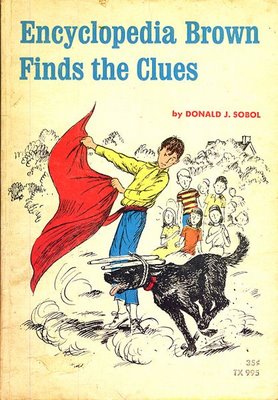TITLE: Names, Values, and The Battle of Bull Run
AUTHOR: Eugene Wallingford
DATE: July 18, 2012 2:31 PM
DESC:
-----
BODY:
Author Donald Sobol
died Monday.
I know him best from his long-running series, Encyclopedia
Brown. Like many kids of my day, I loved these stories.
I couldn't get enough. Each book consisted of ten or so short
mysteries solved by Encyclopedia or Sally Kimball, his de facto
partner in the Brown Detective Agency. I wanted to be
Encyclopedia.
The stories were brain teasers. Solving them required knowledge
and, more important, careful observation and logical deduction.
I learned to pay close attention while reading Encyclopedia
Brown, otherwise I had no hope of solving the crime before
Encyclopedia revealed the solution. In many ways, these stories
prepared me for a career in math and science. They certainly
were a lot of fun.
One of the stories I remember best after all these years is "The
Case of the Civil War Sword", from the very first Encyclopedia
Brown book. I'm not the only person who found it memorable;
Rob Bricken ranks it #9 among
the ten most difficult Encyclopedia Brown mysteries.
The solution to this case turned on the fact that one battle had
two different names. Northerners often named battles for nearby
bodies of water or prominent natural features, while Southerners
named them for the nearest town or prominent man-made features.
So, the First Battle of Bull Run and the First Battle of Manassas
were the same event.
This case taught me a bit of historical trivia and opened my mind
to the idea that
naming things from the Civil War
was not trivial at all.
This story taught me more than history, though. As a young boy,
it stood out as an example of something I surely already knew:
names aren't unique. The same value can have different
names. In a way, Encyclopedia Brown taught me one of my first
lessons about computer science.
~~~~
IMAGE: the cover of Encyclopedia Brown Finds the Clues,
1966. Source:
Topless Robot.
-----

